[This article was first published in April, 2022, then updated with new content and photos in November, 2023, and revamped June 8, 2025.]
When I originally wrote this article way back in April, 2022, I had been secretly hoping that Pen Boutique owners Leena and Raj would suggest I write about Pelikans, so I was thrilled when Raj messaged me, "I think the next topic can be the Pelikan pens." I had loved Pelikans for years, although I hadn't personally used the larger models at that time, and I was eager to be able to explore them in depth. Back then, I owned a gorgeous Tortoiseshell-White M400 and the mysterious looking Petrol-Marbled special edition M205, and I'd probably spent more time than I should gazing longingly into the Pelikan display case at the store, dreaming about the other classic models. I knew I would enjoy this topic, but I never imagined what writing with the spectacular M1000 nib would be like, nor was I fully aware of the amazing amount of variety in the entry-level M200 collection, or where my Pelikan passion would take me. Since then, my collection has grown to a lovely little flock of nine, and I've become known at Pen Boutique and beyond for my passion for the brand, which, I admit, can border on giddy at times. There's just something irresistible to me about Pelikans.
This article remains one of my favorites that I have ever written, and, once again, I got excited when Raj suggested that it needed updating. He's right... although I did update the article back in November 2023, many exciting new models have come out since then, and I can't wait to take more photos, add more in-depth information, and immerse myself in the world of Pelikan pens once more. I wonder if I'll dream of Pelikans again this time...
Pelikan History
Pelikan began in 1838 as an ink company founded by Carl Hornemann in Hanover, Germany, and was purchased from Hornemann in 1871 by Günther Wagner, who registered the pelican as one of the very first trademarks in Germany, in 1879. The pelican he used was adopted from his family crest, which included an adult pelican with three chicks in a nest. The first logo of the company showed four chicks, as Wagner’s wife was expecting their fourth child when he registered the trademark. Over the years, the logo has been updated numerous times, and the current elegantly streamlined logo shows only one chick. As always, it depicts the love of the pelican parent toward its child, matching the values of the Pelikan brand.

In 1884, Lewis Edison Waterman patented a fountain pen, and a market began to emerge for these new pens, which were much more convenient than the older dip pens. Before too long, Günther Wagner started producing inks for fountain pens, which led the company in an exciting new direction.
Until the late 1920s, fountain pens filled using pressure and lever mechanisms or an eyedropper, but they could only hold a small amount of ink and could be very messy. In 1929, Pelikan introduced their revolutionary new filling mechanism with a differential spindle gear. This technology uses two different screw threads on the inside of the fountain pen to allow the spindle to move more quickly than the piston knob. It was based on Günther Wagner's purchase of patents by Hungarian engineer Theodor Kovacs. This trendsetting piston filler, the "transparent Pelikan fountain pen" was launched the same year and was an immediate sensation. This pen had a translucent ink container, which made it easier to monitor the ink capacity. The jade green translucent ink window is still used in today's black Pelikan pen models.

In 1950, the Pelikan 400 model was launched. This fountain pen had the classic translucent green and black striped celluloid barrel familiar to us today, and looked virtually identical to the modern M400 Pelikan pens that were relaunched in 1982 with some changes to the ink feed and piston mechanism. Although Pelikan has since introduced many other variations, the green and black striped color scheme is iconic for the brand, along with the famous beak shaped clip.

Pelikan Classics
The most classic Pelikan pens are the M1000, M800, M600, M400, and M200 series. These pens all have the same traditional shape that was first introduced in 1950. This type of Pelikan (with the exception of the steel-nibbed M200 pens) is known as the Souverän, which means "sovereign" in German.

The photo above shows an M1000 in Black, M800 in Black/Green, M605 Stresemann, M400 in Black/Red, and M205 Petrol-Marbled. Once you understand Pelikan's model numbers, they become much easier to interpret.
Models that begin with an "M" signify a piston-filling fountain pen (Mechanik-Fuellhalter, or mechanical fountain pen), "P" is a cartridge fountain pen (Patronen-Füllhalter), "R" is a rollerball pen (Rollerball), "K" is a ballpoint pen (Kugelchreiber), and "D" is a mechanical pencil (Druckbleistift). Numbers that end in "0" signify gold trim, and the "5" endings are used for pens with silver colored trim.
I'll be solely focusing on piston-filling fountain pens in this article, but the 800 series is also available as a rollerball and ballpoint, and the 600 and 400 series also come in rollerball, ballpoint, and mechanical pencil. Most 200 series pens are piston-filled fountain pens, but the P200 series is a cartridge/converter based fountain pen. The magnificent 1000 series, Pelikan's largest, is only available as a fountain pen.
The difference between an M400 and M200 pen is that the M200 series has a steel nib and less fancy trim, with only one ring rather than two on the cap and piston knob.
Although all the "M" fountain pens use the same filling mechanism and are made the same way, the M800 series and M1000 series pens are built with a brass (rather than plastic) connector in their piston assembly, making them slightly heavier for their size and making their weight distribution different than the other pens.
I was skeptical about the ink volume capacity numbers I found listed for the different models, so I asked Gary Lange, National Sales Director and Brand Manager of Pelikan. He agreed with me that the numbers seemed weird, so he decided to test for himself! Gary filled each model to capacity with ink, put the nib back in, then measured the ink remaining.
His results were:
M1000 = 1.60 ml
M800 = 1.50 ml
M600 = 1.40 ml
M400 = 1.35 ml
M200 = 1.35 ml
Gary says that this is the maximum capacity, and there is no way to fit any more than he did. For actual usability, he would say 1.5 ml for the M1000, 1.4 ml for M800, 1.3 ml for M600, and 1.2 for M400 and M200. Thanks, Gary!
Their size difference is:
- Souverän M1000 = 14.7 cm length / 14.1 mm diameter / 32.6 g weight
- Souverän M800 = 14.2 cm length / 13.1 mm diameter / 28.2 g weight
- Souverän M600 = 13.4 cm length / 12.4 mm diameter / 16.4 g weight
- Souverän M400 = 12.7 cm length / 11.7 mm diameter / 14.9 g weight
The striped material that forms the distinctive barrels in the Souverän range is refined cellulose acetate made from a cotton base using a formula developed specially for Pelikan. Pelikan manufactures a striped bolt, slowly builds up the layers over months, bends them to tailored plates, and contour grinds and shapes them using a natural diamond. Each of the stripes has an individual radiance, and each writing instrument is unique because the stripes have natural variation. They are quite beautiful, and give a great deal of depth and a complex vintage look to the barrel of the pen. Traditionally, pens with the striped motif have been translucent--if you hold a standard Souverän up in a well-lit place, light shines through the colored stripes and you can judge how much ink you have in your pen.
In 2022, it became more and more difficult for Pelikan to get the materials necessary for the manufacturing process, so they needed to change the material of the striped cellulose acetate, and the formerly translucent parts are opaque in newer pens. The material used is the same exact cellulose acetate, but just an opaque material, as opposed to slightly transparent. Each stripe is still unique and beautiful.
This opaque material wasn't new to Pelikan in 2022, as many of the other recent pen releases were also opaque, such as the M405 Silver-White, M600 Tortoiseshell Red, M605 Green-White, M600 Violet-White, and M800 Brown-Black. Some of the older models we occasionally get in stock may have the translucent barrel. The opaque barrel is a pretty subtle difference for most pens, and definitely isn't something that keeps me from enjoying my newer Pelikans.
Pelikan Nibs
The M1000, M800, and M600 series each have their own individual body size and nib size, while the M400 and M200 series are the same size and are able to swap nibs.
M1000 and M800 have 18k gold nibs, while M600 and M400 are 14k gold.
The Souverän nibs are handcrafted and are either gold and rhodium bi-colored for the pens with 24k gold-plated trim, or completely rhodium-plated in pens with palladium-plated trim. They are also tested by hand.
The 200 series pens' steel nibs are gold-plated in pens with matching gold-plated clip and rings, and polished stainless steel for M205 pens to match their chromium-plated clip and rings.
Each nib is available in extra-fine (EF), fine (F), medium (M), and broad (B).

One fascinating thing that I learned when I was researching before I bought my first Pelikan is that some models can also fit vintage Pelikan nibs! Indy-Pen-Dance has a handy chart showing the different interchangeable nib sizes if you are interested in delving deeper into the possibilities of combining modern and vintage pens. I have never done this, but I always thought having this potential was one of the especially cool things about Pelikans, as vintage pens' nibs can be quite different from modern ones, and many pen aficionados find them very desirable.
The Piston Mechanism
The other special thing about Pelikan pens is their piston filling mechanism. The mechanism works the same now as it did when Pelikan introduced this new invention in 1929. I was a little nervous about trying it before I bought my first Pelikan, but it's actually extremely simple to use, and one of the things I love most about my Pelikan pens is how easy they are to fill and clean.
To fill the pen, first gently twist the knob at the end of the pen counter-clockwise (to the left) until it stops. This moves the piston forward, toward the nib. You can actually see how this works with a transparent model like the Golden Beryl M200.

Next, simply submerge the nib in a bottle of ink and smoothly turn the knob in the reverse direction to draw the ink into the ink reservoir. This moves the piston away from the nib. The piston movement creates a vacuum that draws the ink into the fountain pen. You can repeat this process if the pen doesn't fill completely the first time. (You also don't have to fill it completely, if you don't need an entire fill of that ink color and don't want to waste ink.)
If you have a translucent Pelikan, you can hold the pen up to the light to see both the mechanism and how much ink is in the reservoir.

[This is my own pen, an M400 Tortoiseshell-White.]
Pelikan suggests that you should allow three to five drops of ink to drip back into the bottle after filling your pen. This allows excess ink to flow back out of the ink regulator, and too-wet writing and ink dripping into the cap will be avoided. This is a great tip, although I usually forget to do it!
Turn the nib upright and slowly turn the knob to release any remaining air from the pen. The knob should come to a stop and be flush with the pen. If there is any excess ink on the grip, you can wipe it off with a soft cloth or paper towel.
Cleaning the pen is just as easy! Simply submerge the nib in a glass of lukewarm water and turn the knob slowly in both directions to draw clean water into the pen and dispel the remaining ink and water in the ink reservoir. Just use plain water, with nothing added. Repeat this process until the water being dispelled from the pen runs clean. It only takes a minute or two, and I love how easy it is to tell when the pen is fully clean! If you use your pen regularly and use Pelikan 4001 Royal Blue or Edelstein Sapphire ink, you only need to clean it once a year. If you use it sporadically or use other inks, Pelikan recommends cleaning every 3-5 months.
You can also easily unscrew the nib and remove it from the pen and rinse it under running water or soak it in water to assist the cleaning process if you need to. I like using my M200 series pens for testing inks because cleaning is so quick and thorough.

[Pictured: my Copper Rose Gold special edition M200 with the nib removed.]
Writing with the Pelikans
Yes, I love looking at Pelikans, thinking about Pelikans, filing Pelikans, and cleaning Pelikans, but how about writing with Pelikans? These pens are super smooth, with lots of variety to please different tastes. When I originally wrote this article back in 2022, I was astounded when I tried the different pens I brought home and compared both the different pen sizes and nib sizes.

I personally find the broad nibs a little too wet and thick, but they were my dad's favorite! My mom, on the other hand, preferred the extra fine nibs across the board. I enjoy different aspects of all the sizes. I sampled the pens on Rhodia paper.
There is a big difference between the EF nib on the M1000, the M600, and the M200. The large 18k gold nib on the M1000 puts down a lot more ink, and, although it is able to write fairly fine, it is more similar to a Japanese medium fine, but with the capability of flexing and writing with a line that is almost twice as thick! It felt a little scary to me, but also amazing! (Note that the "light writing" and "heavy hand" part near the bottom of the previous photo was also done with the M1000.)

Here I used the same ink for all three pens--Pelikan Edelstein Tanzanite. Note that Pelikans are very wet writers, so Pelikan ink is on the dry side. They behaved perfectly with this ink. Keep in mind that the writing might be even thicker with different ink, though! This sample is on Tomoe River paper.
Although the Pelikan Souverän's gold nibs are smooth, wet, and very beautiful, I also love Pelikan's steel nib. For me, the M200 series F nib is perfect, and I own several of them. The steel nibbed M200 series pens write thinner than the Souveräns, and their nibs are much stiffer, but are still nice and aren't scratchy. They have a unique feel that I actually can't get enough of! When I use a Souverän, I usually go for a fine, or even extra-fine, especially with the 18K nibs. These nibs are very luxurious feeling!
Souverän M1000
Of all the different models, the one that impressed me the most was the Souverän M1000. This pen is too large for me, but it's a truly remarkable pen. The nib is not advertised as being a flex or semi-flex nib, but due to its sheer size and the softness of the 18k gold, it produces an amazing amount of line variation.

Please be careful with this pen so that you do not spring the beautiful huge nib!

As I said, the M1000 is quite a substantial pen, and really too large for my hands, but I still can't help loving it. Although it's fairly heavy just due to the size, the balance is perfect. I would never post the cap on the back to write with an M1000, but here's what it would look like in my hand if I did!

 While I was in the store, I compared the M1000 to a few other exceptional large pens. Here, side by side, are a Parker Duofold Centennial, the Pelikan M1000 Souverän, a Sailor Professional Gear King of Pens, and a Montblanc Meisterstuck 149. The Pelikan has the largest nib, and I also think it's the most beautiful!
While I was in the store, I compared the M1000 to a few other exceptional large pens. Here, side by side, are a Parker Duofold Centennial, the Pelikan M1000 Souverän, a Sailor Professional Gear King of Pens, and a Montblanc Meisterstuck 149. The Pelikan has the largest nib, and I also think it's the most beautiful!

The M1000 is regularly available only in the two most classic colors (solid Black and Black & Green Stripe) but this size is also used for some of Pelikan's most special limited edition pens, such as the Maki-e and Raden series.
From the Largest... to the Smallest
What if you don't want the large and very expensive M1000? Well, that's why there are three other sizes! When I had my father try the pens, his favorite size was actually the same as mine--the smallest one! The M400 and M200 models are sized like vintage pens and may seem small at first if you are used to larger modern pens, but they can be very comfortable for both men and women and are also the most portable and lightest. (Plus there's that neat thing I mentioned earlier about being able to use vintage nibs in them or swap the steel M200 series nib for a gold one.) While I don't post the cap on the back of the pen when I use the larger Pelikans, I do with my M200 and M400 series pens, and they feel perfect to me that way.
What I like most about the M200 series (other than the lower price) is that it comes in so many interesting barrel designs that aren't available on the more expensive pens. They range from glittering copper to transparent demonstrators to beautiful marbled colors, and more. The M200 series is fun, cool, fresh, sparkly, and sophisticated... whatever you are in the mood for. These pens are breathtaking in person, and I especially love how the look of the barrels changes depending on lighting. You really have to experience it in person to get the full effect, but here are some photos to give you an idea of their beauty.
My first M200 series pen, and still one of my favorite pens in my whole collection, was the M205 Petrol-Marbled special edition. I bought it as a birthday gift to myself a few months after I first started working at Pen Boutique. We sold out of this retired model not long after, but later received more, and still have a few left. The deep greenish blue is mysterious and seriously stunning. I can never stop staring at mine, and reach for it often.

Special edition Pelikan Classic M200 in Copper with Rose Gold Trim is a model I awaited with great anticipation a few years ago. This one is also my own pen and I love it. The shimmering copper-colored barrel still takes my breath away when a beam of sunlight hits, and the rose gold trim is its perfect complement.

I love how warm and bright the Pelikan Classic M200 Orange Delight special edition is. It's the perfect shade of orange, and lives up to its name, cheering me up even on a cloudy day. Even the top finial is orange, so, if you post your cap, you see it smiling up at you when you look down while writing. I don't own this pen (yet?!) but orange is one of my favorite colors, and I almost penabled myself taking photos of it for this article! We have an incredible 50% off price on this pen right now, so it's getting harder and harder for me to resist.

I felt like June had truly started when I took this pen outside with a dish of ice cream on my front porch for a quick break on blog-writing day.

I also love the delicate colors Pelikan has chosen for some of these pens, such as the Pelikan Tradition M200 in soft Pastel Green and Pastel Blue, and the Classic M205 Rose Quartz special edition.
The special edition Pelikan Classic M200 in Pastel Blue is so serene looking, I get lost in the cloud-like swirls of its barrel.
 The semi-transparent Pastel Green is ethereal, almost fairy-like in its grace.
The semi-transparent Pastel Green is ethereal, almost fairy-like in its grace.

I'm not usually a huge fan of pink, but the Rose Quartz is such a warm and pretty shade, inspired by the rose quartz gemstone. While our supplies last, we are also able to offer an amazing price on this demonstrator, which is available in a beautiful gift set boxed with matching Edelstein ink, or individually.

We also have a boxed gift set of the Pelikan Classic M200 Golden Lapis, the Special Edition from 2024. This one is inspired by the lapis lazuli gemstone and is very sparkly, even in indoor lighting! Outside, in the sun, it's show-stopping, and the matching Golden Lapis ink, a deep cobalt blue laced through with gold shimmer particles, is also a keeper.

Pelikan's Edelstein inks are its premium line, and are all inspired by gemstones. The word Edelstein means "noble stone" in German, and is pronounced like the edelweiss ("noble white") flower sung about in The Sound of Music. (I.e., edel rhymes with "dreidel" and stein is like a beer stein.) I was amazed by how well both the pen and ink manage to capture the intense colors of lapis lazuli.
Other gemstone inspired M200 series pens include the shimmering Golden Beryl and Moonstone, a lovely pair that seem to belong together. They are so extreme in bright sun!

Golden Beryl, a demonstrator with shimmering golden luster, actually reminds me of the moon, gleaming with its silver trim and luminous white barrel and cap, as if lit from within.
The Moonstone pen is a little more subtle. In subdued light, it looks grey and mysterious, but sunlight reveals that it's secretly full of brilliant multi-colored sparkles!

The Apatite demonstrator is inspired by another gemstone--one with a strange name, but a beautiful color! If you aren't a fan of sparkles, but love clear crystalline aqua waters, this is the M200 series pen for you. I love the hint of green in this blue pen, whose color reminds me of snorkeling in healthy reefs teeming with parrotfishes and other wrasses. I had fun doodling with the Apatite M205 and ended up drawing a basket of fish and a pelican, for some reason.

It's impossible for me to photograph them all, but other beautiful M200 series pens include the rich brown Smoky Quartz M200, the completely clear Demonstrator M205, and the glowing-warm Gold-Marbled M200. Gold-Marbled reminds me of my White Tortoise M400, but it's a lot less expensive!

The Pelikan I'm most eager to photograph right now is the new one I'm awaiting with bated breath: the Pelikan Classic M200 Red Marbled special edition, which jumped to the top of my Pelikan wishlist the minute I set eyes on Pelikan's photos. It's available for pre-order now, and I'll add a picture when we get it in the store!
...and Everything in Between
All of the Pelikan sizes have their charms, and each Pelikan lover will have his or her own favorites. I found it hard to choose just a few pens to bring home when working on this article, since I love them all and wanted to give a full representation of the different colors and models. Pelikan devotees often end up developing what they call a "flock," and affectionately refer to their pens as "birds."
Here are the classic Souverän M1000, M800, and M400 sizes together with the ink I used in my writing samples.

The Souveräns come in many elegant variations, so here are a few more beautiful birds preening in the soft light of spring.

The Black/Blue striped color is available with either gold- or palladium-plated trim, as is the solid Black color. Pictured is an M400.
The M605 Anthracite is also known as Stresemann. This classy black and grey striped pen was named for the suit style made popular by the foreign minister of the Weimar Republic, Gustav Stresemann.

The M405 Silver-White is so elegant. I can't decide whether I like Pelikans best in black or in white! And what about the pretty Red/White M600?

Speaking of red, the Black/Red striped color gleams!

I personally have a huge love for the Tortoiseshell-style Souveräns, and now own three myself: the Tortoiseshell-White M400, Tortoiseshell-Red M600 (now sold out), and Tortoiseshell-Black M605, whose black and white barrel reminds me of raden! These pens are not made from actual tortoiseshell, but from the same cellulose acetate as the other models, only with much more variation in the stripes.

I am also extremely tempted by the Tortoiseshell-Brown M400, one of the most beautiful pens in the Tortoise series. We recently received a small number of this retired 2016 pen, and still have a few left at an incredible price. This Tortoise has a dark brown cap and piston knob, and stunning golden brown stripes that are translucent when held up to the light. I think it's one of the most eye-catching Pelikans we currently have on our shelves, and I'm surprised we have any left!

If you wonder just how much a sunbeam can transform these Tortoiseshell pens, check out my Tortoiseshell-White at my local cafe on karaoke night this past September.

Something New and Different
Recently, Pelikan has also released some very interesting new Souveräns that are departures from the perennial striped classics. The Warm Grey M670 special edition fountain pen and matching ballpoint are the first to be given this new designation, indicating black PVD coated trim! This unusual color was inspired by the earthy natural grey tones that are intriguing the automotive and interior design world.

The M800 Cream Blue, which came out around the same time, was an instant hit, with Pelikan lovers immediately responding to the warm creamy cap, grip section, and piston knob juxtaposed with the intriguing midnight blue translucent resin, which allows in light at its ink window, but is lined so that the rest of the barrel is opaque, hiding the mechanism within.

Arguably the most exciting release that is coming soon (and available for pre-order now) is the M815 Metal Striped Blue, which follows the 815 Metal Striped Black from about seven years ago, and the 815 Wall Street Special Edition that was introduced in 1995. I know several customers who are awaiting this pen with great anticipation and placed orders almost as soon as it was announced! Like many others, I can't wait to see it with my own eyes. It features a sophisticated blend of high-quality resin and palladium-plated brass stripes, which add 9 grams of weight to the pen, something that those who love Pelikans but prefer a slightly heavier pen will really appreciate.
I'm not sure which bird I will add next to my growing collection. The latest was a vintage green striped 140 with an extra fine flexible nib, but I do definitely have my eye on that new Red-Marbled special edition and I can't wait to see it. I am also currently obsessed with Pelikan Toledos, and will be updating again soon with a new section on them...
Which Pelikan is on the top of your wishlist?
-Laura P.

I love comments on my blog! Please leave comments if you like the articles, and, if you have any questions about this article, or any of the other blog articles, you can e-mail support@penboutique.com. Thank you!

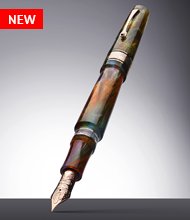
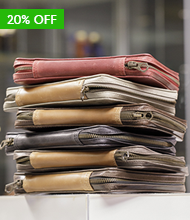
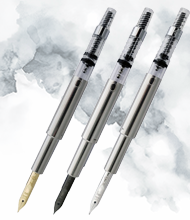
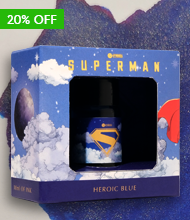
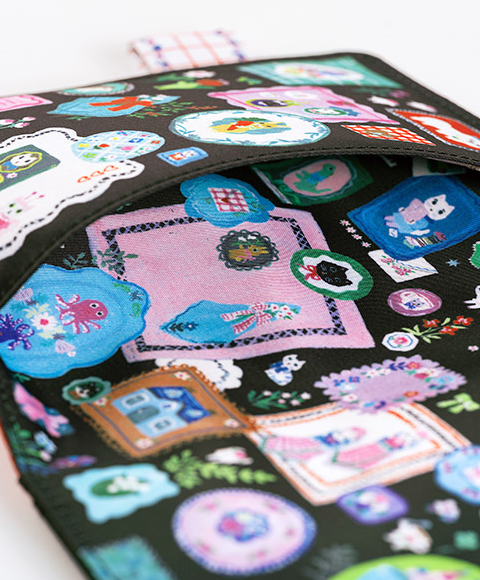
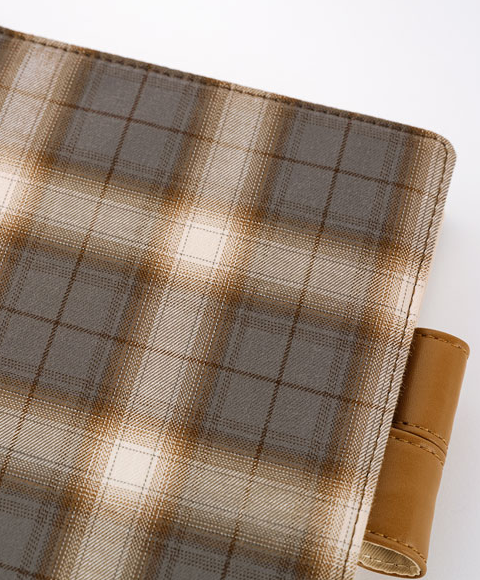
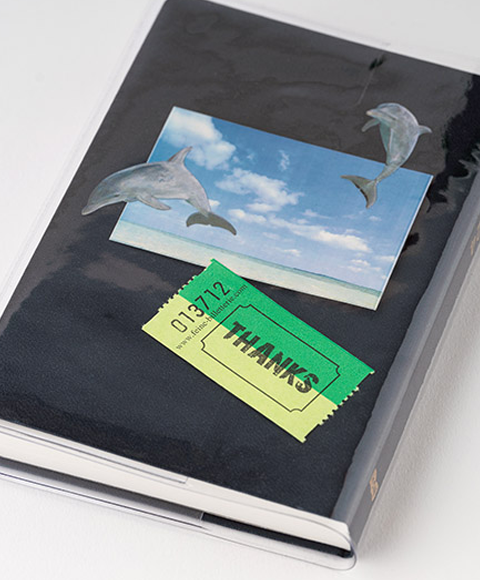
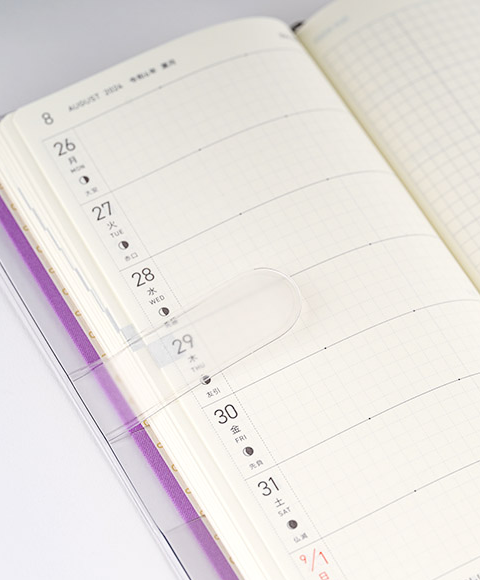
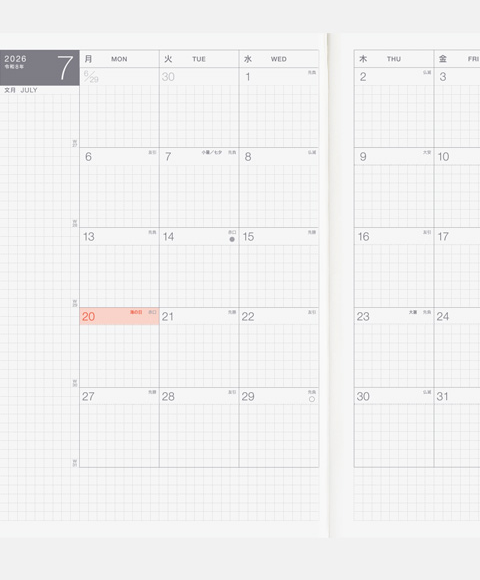




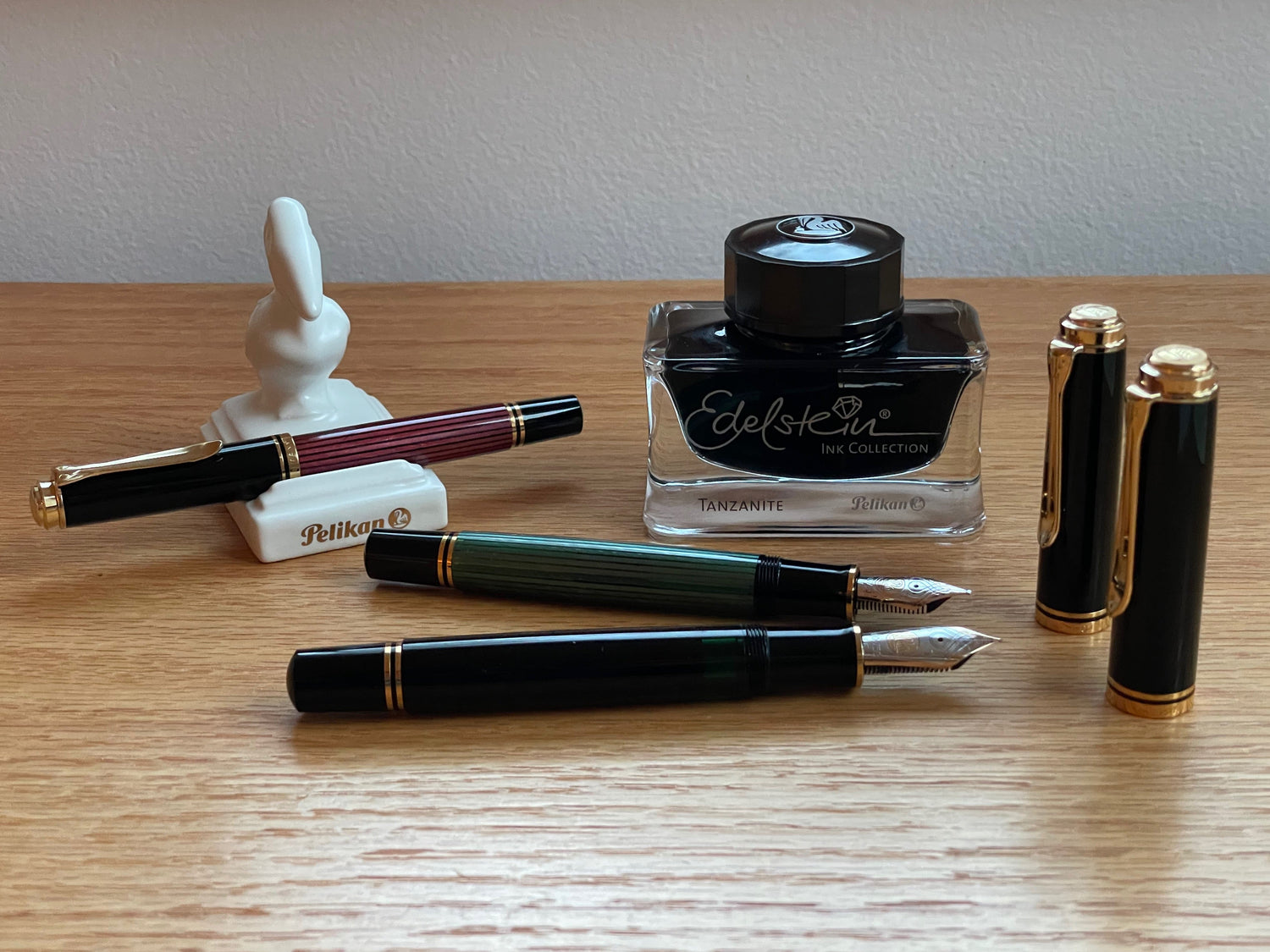
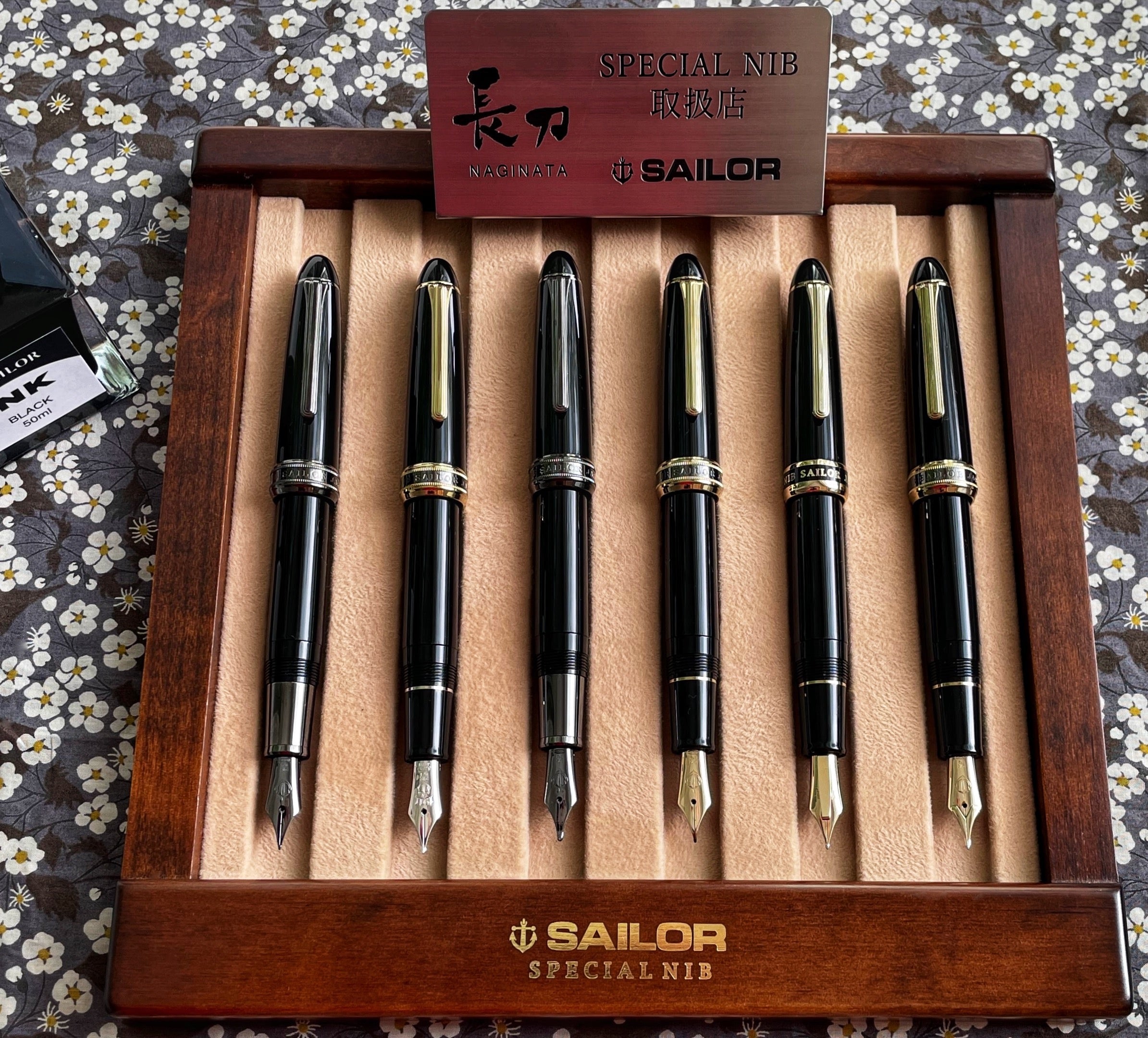
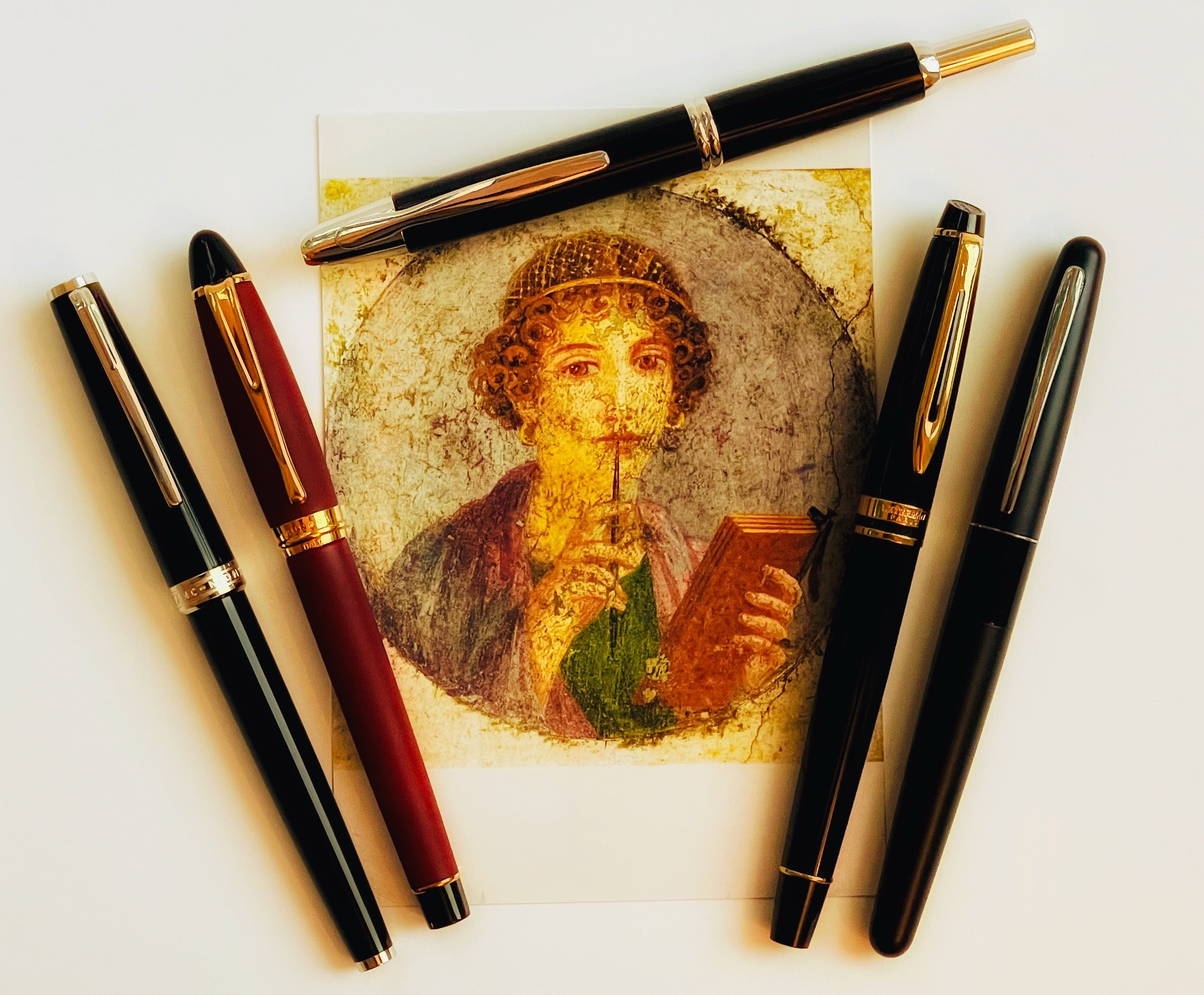

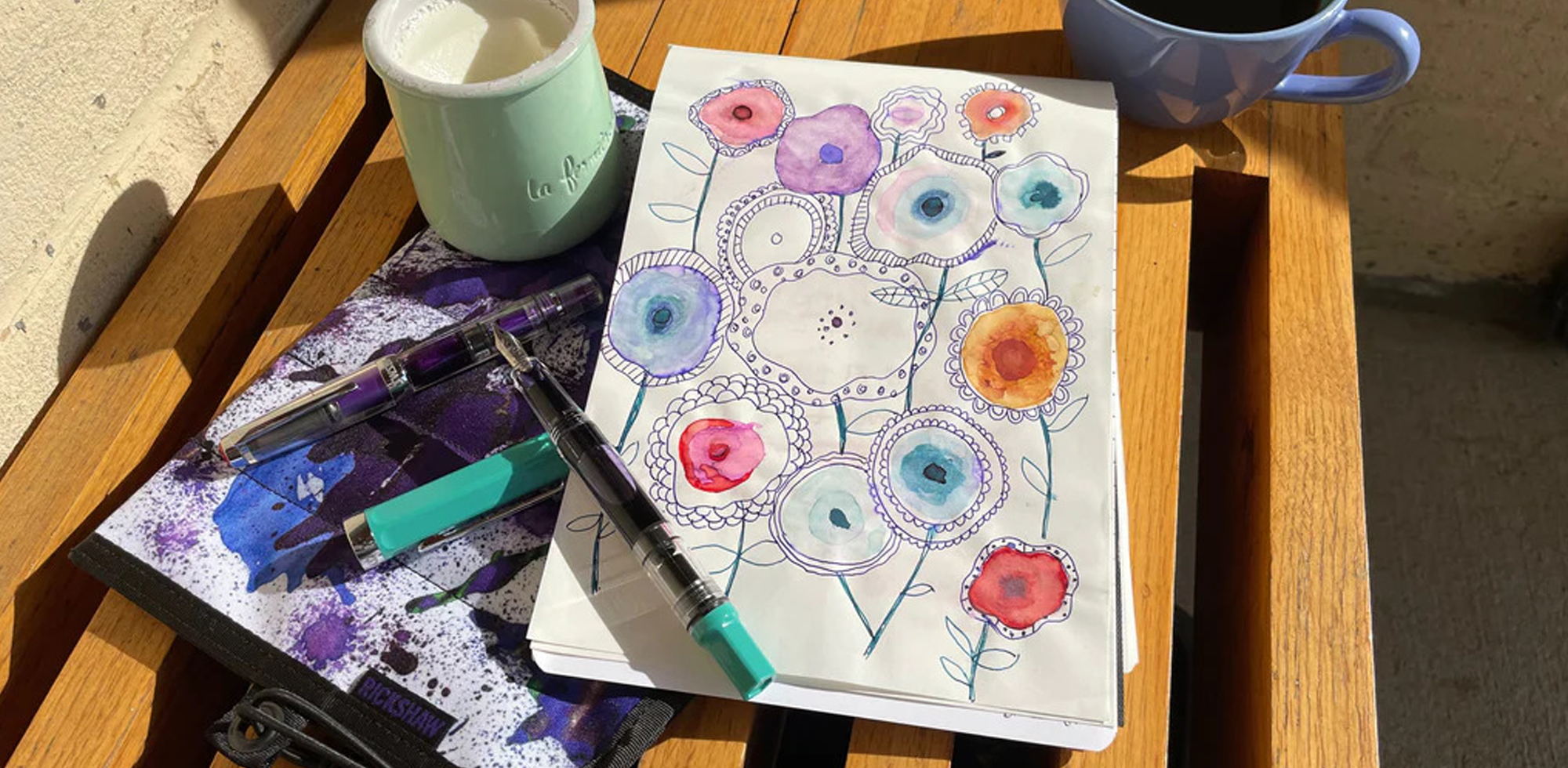
41 comments
Brian Mckain
Watching- being educated-thanks
Watching- being educated-thanks
Patrick O’Leary
As usual, your article was educational, informative, and personal. I seem to always learn something from your posts here on the blog. I can’t forget to mention the images, stunning is the word that comes to mind. A few of them I’ve borrowed and use in my screensaver on my personal PC. And one last thing, thank you for the shout-out on the pen rest. I’m glad you’re enjoying it.
As usual, your article was educational, informative, and personal. I seem to always learn something from your posts here on the blog. I can’t forget to mention the images, stunning is the word that comes to mind. A few of them I’ve borrowed and use in my screensaver on my personal PC. And one last thing, thank you for the shout-out on the pen rest. I’m glad you’re enjoying it.
Matthias Schrader
Hello Laura,
Thank you so much for this wonderful article. I love it and one can feel hoe much you love Pelikans. Me too since I was round about 5 years, heavily inspired by my uncle. Inspired by your article, I counted 13 different models I have. You mentioned the M300 in the comments which is a lovely, cute little pen. I’ve got one 4 weeks ago at a pen show and immediately loved it. If you ever come across one, get it!
Hello Laura,
Thank you so much for this wonderful article. I love it and one can feel hoe much you love Pelikans. Me too since I was round about 5 years, heavily inspired by my uncle. Inspired by your article, I counted 13 different models I have. You mentioned the M300 in the comments which is a lovely, cute little pen. I’ve got one 4 weeks ago at a pen show and immediately loved it. If you ever come across one, get it!
Amanda Haines
This was an amazing read and so very informative. I have been eyeing Pelikans for awhile but did not know which one I should start with. I am in love with the M605 Black Tortoiseshell but just don’t have the funds for it, maybe one day. I am however considering sneaking the M205 Petrol-Marbled into my cart. Enabled me again Laura and I love you for it.
This was an amazing read and so very informative. I have been eyeing Pelikans for awhile but did not know which one I should start with. I am in love with the M605 Black Tortoiseshell but just don’t have the funds for it, maybe one day. I am however considering sneaking the M205 Petrol-Marbled into my cart. Enabled me again Laura and I love you for it.
Michael Erler
Thank you for your very informative blog. I too have 9 Pelikan fountain pens, or I will have, once US customs releases my latest acquisition.
With the exception of my M1000, all of mine are “pre-loved”. I especially like vintage gold nibs.
Among them are a brown stripe M400 with a BB nib and ebonite feed, a red stripe M400 with an oblique broad nib, a classic green stripe M400 with an oblique medium nib, and a blue stripe M405 with a B nib.
Then there are the Italic nibs. A broad italic on a black M200, and a medium Italic on a M120.
The smallest nib in the bunch is a gold EF nib on a marbled blue M200.
A classic green stripe M400 with a rare oblique double broad nib is on the way when it clears customs.
And the flagship, a M1000 with a medium nib.
All have amazing flex and line variation, and are such a joy to use, and I prefer them to Montblanc pens!
Thank you for your very informative blog. I too have 9 Pelikan fountain pens, or I will have, once US customs releases my latest acquisition.
With the exception of my M1000, all of mine are “pre-loved”. I especially like vintage gold nibs.
Among them are a brown stripe M400 with a BB nib and ebonite feed, a red stripe M400 with an oblique broad nib, a classic green stripe M400 with an oblique medium nib, and a blue stripe M405 with a B nib.
Then there are the Italic nibs. A broad italic on a black M200, and a medium Italic on a M120.
The smallest nib in the bunch is a gold EF nib on a marbled blue M200.
A classic green stripe M400 with a rare oblique double broad nib is on the way when it clears customs.
And the flagship, a M1000 with a medium nib.
All have amazing flex and line variation, and are such a joy to use, and I prefer them to Montblanc pens!
Mary Woods
Thank you for this very informative article, Laura. I picked up my second Pelikan at the DC pen show, and a third at the show in San Francisco. Not quite a flock yet, but winging my way towards that goal. I’m saving this article for reference-and for inspiration😀
Thank you for this very informative article, Laura. I picked up my second Pelikan at the DC pen show, and a third at the show in San Francisco. Not quite a flock yet, but winging my way towards that goal. I’m saving this article for reference-and for inspiration😀
Eric Arnold
I always enjoy your blog, and this one is no exception. The combination of your thorough research and knowledge combined with your passion for the subject make for reading that is just a pleasure. Your excellent photography always brings out the best in the opens as well. Thank you Laura!
My current flock contains a number of Pelikans you did not mention, as they are either vintage pieces or not available in the store. My M120, obtained earlier this year is just a workhorse, and while very simple in trim and nib, writes beautifully without fail. The P20 and P21 cartridge only student pens are great fun, but also still great writers. My 140 from the 1950s, purchased at the Baltimore Pen Show in 2023, is a treasure. What a delight to write with a pen that is older than I am, and with a nib that is of softer gold and offers more flex! I hope that at some point you will expend this article once more and cover some of the vintage models to be on the lookout for. Looking forward to seeing you at the upcoming hub!
I always enjoy your blog, and this one is no exception. The combination of your thorough research and knowledge combined with your passion for the subject make for reading that is just a pleasure. Your excellent photography always brings out the best in the opens as well. Thank you Laura!
My current flock contains a number of Pelikans you did not mention, as they are either vintage pieces or not available in the store. My M120, obtained earlier this year is just a workhorse, and while very simple in trim and nib, writes beautifully without fail. The P20 and P21 cartridge only student pens are great fun, but also still great writers. My 140 from the 1950s, purchased at the Baltimore Pen Show in 2023, is a treasure. What a delight to write with a pen that is older than I am, and with a nib that is of softer gold and offers more flex! I hope that at some point you will expend this article once more and cover some of the vintage models to be on the lookout for. Looking forward to seeing you at the upcoming hub!
Lenny
Blue O’Blue is nice. So is Ocean Swirl, however, I love the Vibrant Blue the best – in the blue category.
Blue O’Blue is nice. So is Ocean Swirl, however, I love the Vibrant Blue the best – in the blue category.
Tom Teichgraeber
I saw the first and later articles. Pelikan is the best. If they are your favorites, you have excellent taste! I have the M600 Souverän green stripe that I bought decades ago. It is my favorite pen because it writes so smoothly and is the perfect size. I had to return it to Pelikan for repair because the gold ring above the nib deteriorated. The barrel was replaced for no charge and it is as beautiful as ever. I kept the same nib. The rest of my “flock” are two rollerballs – Stresemann and one called Place de la Concorde. My favorite ink is the Mont Blanc royal blue. Hey! It’s German and works and looks great!
I saw the first and later articles. Pelikan is the best. If they are your favorites, you have excellent taste! I have the M600 Souverän green stripe that I bought decades ago. It is my favorite pen because it writes so smoothly and is the perfect size. I had to return it to Pelikan for repair because the gold ring above the nib deteriorated. The barrel was replaced for no charge and it is as beautiful as ever. I kept the same nib. The rest of my “flock” are two rollerballs – Stresemann and one called Place de la Concorde. My favorite ink is the Mont Blanc royal blue. Hey! It’s German and works and looks great!
Tom Teichgraeber
I saw the first and later articles. Pelikan is the best. If they are your favorites, you have excellent taste! I have the M600 Souverän green stripe that I bought decades ago. It is my favorite pen because it writes so smoothly and is the perfect size. I had to return it to Pelikan for repair because the gold ring above the nib deteriorated. The barrel was replaced for no charge and it is as beautiful as ever. I kept the same nib. The rest of my “flock” are two rollerballs – Stresemann and one called Place de la Concorde. My favorite ink is the Mont Blanc royal blue. Hey! It’s German and works and looks great!
I saw the first and later articles. Pelikan is the best. If they are your favorites, you have excellent taste! I have the M600 Souverän green stripe that I bought decades ago. It is my favorite pen because it writes so smoothly and is the perfect size. I had to return it to Pelikan for repair because the gold ring above the nib deteriorated. The barrel was replaced for no charge and it is as beautiful as ever. I kept the same nib. The rest of my “flock” are two rollerballs – Stresemann and one called Place de la Concorde. My favorite ink is the Mont Blanc royal blue. Hey! It’s German and works and looks great!
Zara
Lovely article. Especially enjoyed the photography and the little stories about your family and their pen preferences :)
Lovely article. Especially enjoyed the photography and the little stories about your family and their pen preferences :)
Rick
Ditto to previous comments – such a well written article. (Also, I’m a grammar and punctuation nut, and I think my high school English teacher would be very impressed!)
Re the “Toledo” model, which comes in varying sizes and colors – I still see them occasionally on other sites, including Appelboom (although not so much in the yellow and red models).
Ditto to previous comments – such a well written article. (Also, I’m a grammar and punctuation nut, and I think my high school English teacher would be very impressed!)
Re the “Toledo” model, which comes in varying sizes and colors – I still see them occasionally on other sites, including Appelboom (although not so much in the yellow and red models).
Pedro T.Hernandez
I have them all m200 to m1000 and all of them are amazing
I have them all m200 to m1000 and all of them are amazing
Renee
I have always wanted a Pelikan fountain pen and when yesterday’s Green Monday deal at Pen Boutique was the Pelikan Classic M205 SE 2022 Apatite gift set, I jumped!!! I am sooo looking forward to receiving it. It is my December birthday gift to me!! Perfect color for a December birthday!!🥳
I have always wanted a Pelikan fountain pen and when yesterday’s Green Monday deal at Pen Boutique was the Pelikan Classic M205 SE 2022 Apatite gift set, I jumped!!! I am sooo looking forward to receiving it. It is my December birthday gift to me!! Perfect color for a December birthday!!🥳
Alabamapenman
I just bought the Souveran 600 Glauco Cambon, which is based on the poster shown in your last picture with the different colored pelicans. The colors are great on the barrel of the pen. I bought from Appelboom, who was offering the pen at the best price I could find on the internet. I wonder if there are future pens planned since this pen is referred to as “art collection.”
I just bought the Souveran 600 Glauco Cambon, which is based on the poster shown in your last picture with the different colored pelicans. The colors are great on the barrel of the pen. I bought from Appelboom, who was offering the pen at the best price I could find on the internet. I wonder if there are future pens planned since this pen is referred to as “art collection.”
Timothy Manolescu
I bought a pelican several months ago (always wanted one) and specified a medium nib. But I think they sent me a fine nib instead. I returned it and pen boutique graciously accepted the return. I would love to try ordering again but am afraid the same thing might happen. I don’t want to overstay my welcome by returning a second time. Perhaps if the company would show writing samples online the nib selection would go more smoothly.
I bought a pelican several months ago (always wanted one) and specified a medium nib. But I think they sent me a fine nib instead. I returned it and pen boutique graciously accepted the return. I would love to try ordering again but am afraid the same thing might happen. I don’t want to overstay my welcome by returning a second time. Perhaps if the company would show writing samples online the nib selection would go more smoothly.
Bill Brockman
What timing! Last week, on the 31st, actually, I created a Pelikan Frankenpen of which I am ridiculously proud. Now this delightful article, mentioning doing exactly what I did, appears in my email.
To explain: In January, I finally sprang for a Pelikan. I’d been hearing about them for years and was looking for a good value on a gold nibbed model all during those years. I’d also heard the steel nibbed Pelikans were nothing special. No luck until this January when I gave up on finding a gold nibbed pen for less than $300.00. I’m on a fixed income and just can’t justify spending that much on one pen.
So, I bought a M205 from Tom Oddo’s (of Goldspot Pens) father, Ben. It came with EF and M steel nibs. It is a simple blue demonstrator. I paid $125, thinking I might eventually swap to a gold nib. However, OEM Pelikan gold nib units for even the lowly M205 are very expensive, so I continued looking for an alternative. Finally, I located an eBay seller (wasupen) who offers vintage Pelikan gold nibs—just the nibs, not the units. I was able to buy one from him for $65 (shipping from Germany included)—a OM 14k flex nib from a 1950s model 140. The flex range is from EF to BB. It wasn’t easy for me as a first timer to remove the sleeve from the M205 unit, remove the steel nib and then replace it with the gold nib. Placing the gold nib in precisely the right spot and then securing it with the sleeve proved very challenging. I tried many times before I finally got it right. Now that I have, however, I am delighted. A gold nibbed Pelikan for $190!
It performs beautifully. I love the size of the M205 because I like to carry pens that post so I don’t have to find a place to put the cap while I use the pen. This pen is perfect for me for that sort of use. The resin of the pen is nothing special. In fact, I think it is pretty pedestrian. Initially, I regarded my purchase from Ben as not a very good value since a number of other companies produce pens in that price range with steel nibs and piston fill mechanisms that have much more attractive resins. Now, however, I feel comfortable that my Frankenpen is a very good value!
What timing! Last week, on the 31st, actually, I created a Pelikan Frankenpen of which I am ridiculously proud. Now this delightful article, mentioning doing exactly what I did, appears in my email.
To explain: In January, I finally sprang for a Pelikan. I’d been hearing about them for years and was looking for a good value on a gold nibbed model all during those years. I’d also heard the steel nibbed Pelikans were nothing special. No luck until this January when I gave up on finding a gold nibbed pen for less than $300.00. I’m on a fixed income and just can’t justify spending that much on one pen.
So, I bought a M205 from Tom Oddo’s (of Goldspot Pens) father, Ben. It came with EF and M steel nibs. It is a simple blue demonstrator. I paid $125, thinking I might eventually swap to a gold nib. However, OEM Pelikan gold nib units for even the lowly M205 are very expensive, so I continued looking for an alternative. Finally, I located an eBay seller (wasupen) who offers vintage Pelikan gold nibs—just the nibs, not the units. I was able to buy one from him for $65 (shipping from Germany included)—a OM 14k flex nib from a 1950s model 140. The flex range is from EF to BB. It wasn’t easy for me as a first timer to remove the sleeve from the M205 unit, remove the steel nib and then replace it with the gold nib. Placing the gold nib in precisely the right spot and then securing it with the sleeve proved very challenging. I tried many times before I finally got it right. Now that I have, however, I am delighted. A gold nibbed Pelikan for $190!
It performs beautifully. I love the size of the M205 because I like to carry pens that post so I don’t have to find a place to put the cap while I use the pen. This pen is perfect for me for that sort of use. The resin of the pen is nothing special. In fact, I think it is pretty pedestrian. Initially, I regarded my purchase from Ben as not a very good value since a number of other companies produce pens in that price range with steel nibs and piston fill mechanisms that have much more attractive resins. Now, however, I feel comfortable that my Frankenpen is a very good value!
Perry Engstrom
In 1962 l was an exchange student in Germany and l bought a tortoise shell 400 for schoolwork. It had an OBB nib, whick l turned side-ways and had a fine vertical and wide horizontal line- presto! My hand became legible. My current M600 (from Penboutique) writes fine. But if only l cot get that old set-up
once more, l’d be thrilled…
In 1962 l was an exchange student in Germany and l bought a tortoise shell 400 for schoolwork. It had an OBB nib, whick l turned side-ways and had a fine vertical and wide horizontal line- presto! My hand became legible. My current M600 (from Penboutique) writes fine. But if only l cot get that old set-up
once more, l’d be thrilled…
debraji
Really lovely pen photography, Laura. Pelikan should hire you to do their photos!
One reason I love Pelikans is that they’re engineered not just for looks, but for constant, everyday use. They’re workhorse pens in thoroughbred bodies. My favorites are the tortoiseshells — black, red, brown, and white. There’s a vintage green tortoiseshell that I wish they’d bring back. I’m fondest of the M600/605 models.
Really lovely pen photography, Laura. Pelikan should hire you to do their photos!
One reason I love Pelikans is that they’re engineered not just for looks, but for constant, everyday use. They’re workhorse pens in thoroughbred bodies. My favorites are the tortoiseshells — black, red, brown, and white. There’s a vintage green tortoiseshell that I wish they’d bring back. I’m fondest of the M600/605 models.
Udayan
The M1000 nib is absolutely amazing. I loved writing with it. But the pen I always desired but never got around to buying were the Toledo. I don’t see them anymore so I’m not if they’re made these days.
The M1000 nib is absolutely amazing. I loved writing with it. But the pen I always desired but never got around to buying were the Toledo. I don’t see them anymore so I’m not if they’re made these days.
Pragati A
Hey Laura! I just bought a fountain pen from an antique store today and the only thing written on it is Classic 205. I was trying to figure out which company it’s from, and at first I thought it might be a Pelikan, but after seeing the pictures on your post I’m not so sure. The clip portion is straight and there isn’t a pelikan logo on the back of the pen tip. Any idea what type of pen this might be? Or do you know anywhere I could look to try and identify it? Thanks!
Hey Laura! I just bought a fountain pen from an antique store today and the only thing written on it is Classic 205. I was trying to figure out which company it’s from, and at first I thought it might be a Pelikan, but after seeing the pictures on your post I’m not so sure. The clip portion is straight and there isn’t a pelikan logo on the back of the pen tip. Any idea what type of pen this might be? Or do you know anywhere I could look to try and identify it? Thanks!
Ejay
I enjoyed going down memory lane reading about Pelikans. I’ve been “into” fountain pens ~ 36 years now and discovered Pelikans early and often. I guess my “pod” numbers ~ 14, ranging from the modern (steel nib) 120 series — give it a try! — thru the M800 (nib reground to flex cursive italic my Mike Masuyama), and even a rogue BP and roller ball, too. I refrained from the M1000, find the M600 is about the perfect weight and size for me.
I enjoyed going down memory lane reading about Pelikans. I’ve been “into” fountain pens ~ 36 years now and discovered Pelikans early and often. I guess my “pod” numbers ~ 14, ranging from the modern (steel nib) 120 series — give it a try! — thru the M800 (nib reground to flex cursive italic my Mike Masuyama), and even a rogue BP and roller ball, too. I refrained from the M1000, find the M600 is about the perfect weight and size for me.
Wade
I recently learned that a flock of pelicans is called a ‘pod.’ Ha! Go figure. I have a small pod of fountains. you have a nice sized pod!
I recently learned that a flock of pelicans is called a ‘pod.’ Ha! Go figure. I have a small pod of fountains. you have a nice sized pod!
Albert Lecuyer
I very much enjoy my Pelikans and enjoyed this post to the same degree. You induced me to finally give in and ordered that book. I have
been a Pelikan owner for forty years now. If you can get a hold of a P200 I think you will find it as satisfying an experience as using the M200s and you’ll have an excuse for using Edelstein cartridges.
I very much enjoy my Pelikans and enjoyed this post to the same degree. You induced me to finally give in and ordered that book. I have
been a Pelikan owner for forty years now. If you can get a hold of a P200 I think you will find it as satisfying an experience as using the M200s and you’ll have an excuse for using Edelstein cartridges.
Laura P.
Thank you so much for the nice comments, everyone! It makes me so happy reading them! A couple of people asked about why I didn’t mention the Pelikan M300 series… alas, this cute little pen is now a thing of the past, so we don’t carry it at Pen Boutique. It was discontinued in 2020. :-( I have never seen one in person, but I would love to!
-Laura P. (blog author)
Thank you so much for the nice comments, everyone! It makes me so happy reading them! A couple of people asked about why I didn’t mention the Pelikan M300 series… alas, this cute little pen is now a thing of the past, so we don’t carry it at Pen Boutique. It was discontinued in 2020. :-( I have never seen one in person, but I would love to!
-Laura P. (blog author)
Paul Matthews
Although I have been using Pelikan pens (M1000, M800, M600, M200) for some time, I learned a few things from Laura’s perspective. Great work!
Although I have been using Pelikan pens (M1000, M800, M600, M200) for some time, I learned a few things from Laura’s perspective. Great work!
DJ
How about the Pelikan M320? I have it in Pearl and it came with a tiny bottle of Pelikan Brilliant Brown ink. It’s a lot smaller than the M200 and I always have it posted when I use it. I should use it more often instead of my bigger ones. It’s a great little fountain pen. I would love to add the M200 Pastel Green to my Pelikan Fountain Pen Collection! Great write up. Thanks.
How about the Pelikan M320? I have it in Pearl and it came with a tiny bottle of Pelikan Brilliant Brown ink. It’s a lot smaller than the M200 and I always have it posted when I use it. I should use it more often instead of my bigger ones. It’s a great little fountain pen. I would love to add the M200 Pastel Green to my Pelikan Fountain Pen Collection! Great write up. Thanks.
Thank you for this wonderful article! I highly recommend letting 2-3 drops of ink return to the ink bottle after filling, then drawing the piston all the way back until it stops. This works for all brands.
Thank you for this wonderful article and for the gorgeous photos as well!
Thank you for this wonderful article and for the gorgeous photos as well!
William Monroe
What a beautiful presentation.
I have several Pelikan pens (not a flock yet just some hatchling’s)
I hope Pelkin is paying you.
What a beautiful presentation.
I have several Pelikan pens (not a flock yet just some hatchling’s)
I hope Pelkin is paying you.
RaymondHerd
informative and helpful
Thank you
informative and helpful
Thank you
Jerald Bohnenblust
This review is very well done. Congratulations!
This review is very well done. Congratulations!
Kimberlin
Wow, such joy and great info. I have a blue-stripe M400 and a green M200 as well as a few vintage 120s. That white and green one is gorgeous as is the sparkly blackish one.
Wow, such joy and great info. I have a blue-stripe M400 and a green M200 as well as a few vintage 120s. That white and green one is gorgeous as is the sparkly blackish one.
Jeff Lawrence
What about the M300? You make no mention of the teeny tiny M300! I have an M1000 and an M800 and three M600, etc. But none are as much of a joy to write with than the little M300!
What about the M300? You make no mention of the teeny tiny M300! I have an M1000 and an M800 and three M600, etc. But none are as much of a joy to write with than the little M300!
Sara Hagen
I have a flock of two Pelikans myself and I love writing with them. They’re second only to my collection of Platinum 3776s but sometimes I find that I like writing with them even more than my 3776s.
I have a flock of two Pelikans myself and I love writing with them. They’re second only to my collection of Platinum 3776s but sometimes I find that I like writing with them even more than my 3776s.
Jane
Thank you. This was an excellent article. I have had the M400 in the black/red stripe for over ten years and I love it. I just started using my fountain pens again this past year after a few years hiatus, and I am so happy I did. I appreciate the history you provided and the overview of all the Pelican pens option. Keep up the good work!
Thank you. This was an excellent article. I have had the M400 in the black/red stripe for over ten years and I love it. I just started using my fountain pens again this past year after a few years hiatus, and I am so happy I did. I appreciate the history you provided and the overview of all the Pelican pens option. Keep up the good work!
Randall Green
Laura, what a great article! Thanks for the history and your thoughts on these pens. The pictures are wonderful!
Laura, what a great article! Thanks for the history and your thoughts on these pens. The pictures are wonderful!
Louise
Very enjoyable article!
Very enjoyable article!
Richard Koenig
Splendid review, both text and photos!
Splendid review, both text and photos!
Wade S
Great post! Amongst the various pens I’ve collected, I have a soft spot for Pelikans. The first “serious” fountain pen I ever bought was a green striped M200. A bit later I bought a blue M400. I also have a Pura that I really think is a fun little pen. These guys are just so reliable, they have a great suction action, and the nibs are really as good as they get. I enjoyed the history and your experience with them in your blog.
Great post! Amongst the various pens I’ve collected, I have a soft spot for Pelikans. The first “serious” fountain pen I ever bought was a green striped M200. A bit later I bought a blue M400. I also have a Pura that I really think is a fun little pen. These guys are just so reliable, they have a great suction action, and the nibs are really as good as they get. I enjoyed the history and your experience with them in your blog.
Michael Dekker
Great write up. Pelikan pens are simply superb. I have 3 m805s and I literally write with all 3 every single day. I MADE time to use them at work, I buy Rodia paper to allow the pens to glide effortlessly across the paper. I cannot recommend Pelikan pens enough.
Great write up. Pelikan pens are simply superb. I have 3 m805s and I literally write with all 3 every single day. I MADE time to use them at work, I buy Rodia paper to allow the pens to glide effortlessly across the paper. I cannot recommend Pelikan pens enough.
Carol
This is a wonderful and fascinating blog. I shall have to get out my Pelikans and give them the appreciation they deserve. Thank you!
This is a wonderful and fascinating blog. I shall have to get out my Pelikans and give them the appreciation they deserve. Thank you!